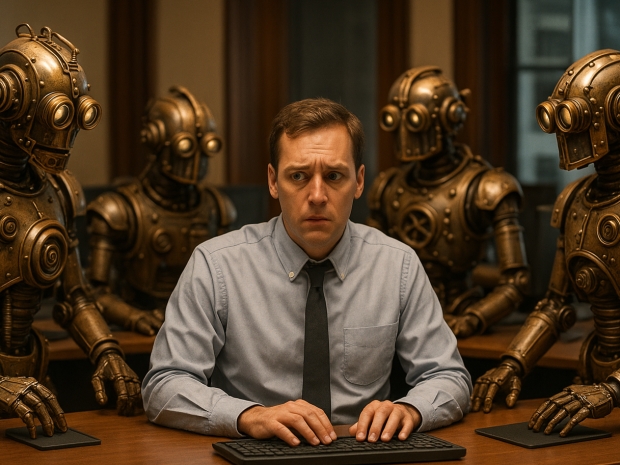At the Gartner IT Symposium/Xpo in Orlando, Florida, BNY chief information officer and global head of engineering Leigh-Ann Russell said: “It’s hard to build an agentic framework, but we have 117 solutions [including agentic] touching everything that happens at the bank and we’re seeing tangible outcomes that impact our bottom line in terms of growing capacity.”
BNY has gone full sci-fi and now has about 100 “digital employees” with their own login credentials who chat over email or Microsoft Teams and report to a human manager. The structure is meant to keep the agent headcount auditable and scalable, rather than letting rogue bots quietly redecorate the production environment.
One “digital engineer” spends its time trawling the bank’s code base for vulnerabilities, then writes and ships fixes for low-complexity flaws so the human engineers can focus on trickier work. The agents sit on top of models from OpenAI, Google and Anthropic, with BNY’s internal Eliza platform bolting on extra security, robustness and accuracy to keep regulators calm.
Retail giant Walmart is leaning on AI agents to spot and source products, using trend signals such as what teenagers are currently splurging on with their parents' cash.
According to Walmart International executive vice president and chief technology officer Vinod Bidarkoppa. In fashion, it usually takes around six months to drag a collection from vague idea to shop shelf, but Walmart’s Trend-to-Product agent chops as much as 18 weeks off that cycle.
The system has already helped churn out specifications and patterns for items like Walmart’s No Boundaries Off-Shoulder Mini Dress, proving that even frocks now get machine minders.
Walmart International executive vice president and chief technology officer Vinod Bidarkoppa said: “This is real value, if all of these agents are working together,” and insists AI is a “force multiplier” for productivity, especially in engineering, rather than a replacement for human decision making.
Plenty of this agent work happens out of sight, which partly explains why punters still think the tech is stuck in the lab.
OpenAI chief financial officer Sarah Friar said, “Walmart is a good example of a customer now working with us on the commerce side, but also using a lot of our technology internally around things like how to merchandise, how to handle risk and so on, on their site,” at the WSJ Tech Live conference on 5 November.
Early studies claiming low adoption and zero returns have not helped, even if they mostly captured clumsy pilot phases. BNY’s Russell pointed to a widely shared Massachusetts Institute of Technology study that found most generative AI pilots to be useless. “For us, that’s a hard false,” Russell said.
There are other hints that agentic AI is not flatlining. Software-as-a-service giant Salesforce told the reporter it has seen “5x growth” since launching its Agentforce platform last year, which explains why the marketing slides look so cheerful.
Adoption is still in its awkward early stages, the trial-and-error bills are piling up, and plenty of pilots will disappear, yet the first movers have shown that AI agents can actually earn their keep once someone bothers to point them at real work.




